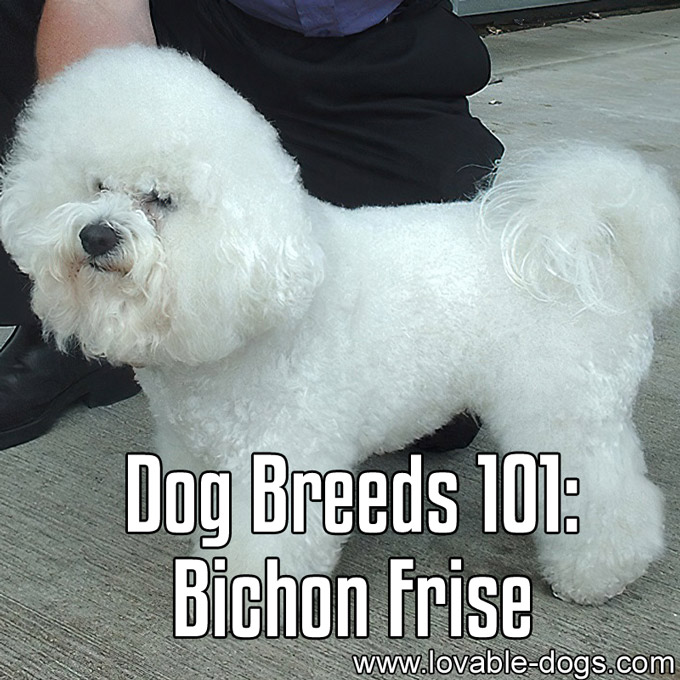
Dog Breeds 101: Bichon Frise – Image To Repin / Share
Photo – Wikipedia – lic. under CC 3.0
The Bichon Frise looks similar to the Maltese but is slightly larger and is a member of the non-sporting group. [1]
It is believed that this breed first appeared in the 13th century. Eventually, Spanish traders realized they could turn a profit off of the Bichon Frise by selling them all over the world to wealthy women. By the 16th century, they became one of the French royal court’s favorite dogs.
The ancestors of the Bichon Frise are said to be the standard Poodle and the Water Spaniel or Barbet. These small dogs’ undercoats are soft and dense while their outer coats are coarse and curly. The Bichon Frise’s hair should stand up with immense volume. Flat or limp hair is undesirable amongst this breed. Their coats are white and may have shades of buff, cream or apricot. [2]
According to the American Kennel Club, the Bichon Frise is normally merry and cheerful. They are also playful, sensitive, affectionate, and gentle mannered. However, they may become territorial of their house and family. This breed is often self-assured and independent-spirited. They possess a happy temperament which makes them easy to live with and they love to travel. Although careful breeding can lessen the likelihood of inheriting a dog with a bad temperament, these dogs must be socialized and trained at a young age. [3]
Known to be a social breed, the Bichon Frise loves to capture the attention of their owners. These dogs need people to recognize their charm and intelligence. This dog is also likely to get along with all those living in their home, including other household pets.
Unlike most dogs, the Bichon Frise does not shed. On the other hand, they do require extensive grooming. It is also important to note that these dogs must always be brushed or combed before giving them a bath in order to avoid matting. [4]
The estimated life span of a Bichon Frise is around 12 to 13 years. However, research shows that these dogs are able to live longer in the United Kingdom than those living in the United States.
References:
[1] http://en.wikipedia.org/wiki/Bichon_frise
[2] Richard G. Beauchamp, Bichon Frise (Barron’s Educational Series, 2009).
[3] Richard G. Beauchamp, The Bichon Frise Handbook (Barron’s Educational Series, 2004).
[4] Liz Palika, Bichon Frise: Your Happy Healthy Pet (John Wiley & Sons, 2010).

